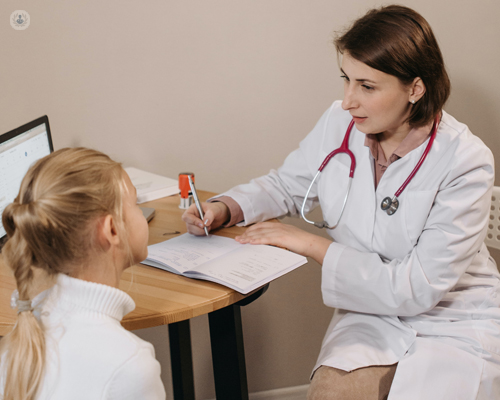Allergic urticaria in children: How is it treated?
Written in association with:Allergic urticaria, commonly known as hives, is a skin condition that causes red, itchy welts to appear on a child’s skin. This reaction can be triggered by various allergens, such as foods, medications, insect bites or environmental factors like pollen. While the condition can be uncomfortable, it’s usually temporary and can be effectively treated. Here to provide a detailed look at this topic is leading consultant paediatrician specialising in allergies, Dr Tom C Dawson.

What are the symptoms of allergic urticaria in children?
The symptoms of allergic urticaria in children can vary depending on the severity of the allergic reaction. Common signs to look out for include:
- Red, raised welts (hives): These welts can appear anywhere on the body and are often itchy. They may vary in size and shape, sometimes merging together to form larger areas of swelling.
- Itching: Itching is one of the most prominent symptoms of urticaria and can be very uncomfortable for children. Scratching the affected areas may worsen the condition.
- Swelling: In some cases, swelling may occur not only in the skin but also around the eyes, lips or throat. This swelling (angioedema) can be more serious if it affects the airways.
- Flare-ups: The hives may come and go, with new welts appearing as older ones fade. These flare-ups can last for a few hours or persist for several days.
If your child experiences symptoms such as difficulty breathing, swelling of the throat, or other signs of a severe allergic reaction, immediate medical attention should be sought, as these may indicate anaphylaxis.
What are the common treatments for allergic urticaria in children?
- Antihistamines: The most common treatment for allergic urticaria in children is antihistamines. These medications work by blocking the histamine response, which is responsible for the itching and swelling. Antihistamines are often given in liquid form for younger children and in tablets for older children. They can help alleviate symptoms quickly and reduce the likelihood of further reactions.
- Avoidance of allergens: Identifying and avoiding the specific allergens causing the reaction is key to preventing future outbreaks. This may involve dietary changes or minimising exposure to environmental triggers, such as pet dander or dust mites. If the specific allergen isn’t known, allergy testing may be recommended by a specialist.
- Topical creams and lotions: In cases where itching is particularly severe, topical corticosteroid creams may be prescribed to reduce inflammation and soothe the skin. These are usually used for short-term relief and are applied directly to the affected areas.
- Epinephrine auto-injectors: In rare and severe cases, allergic urticaria can lead to anaphylaxis, a life-threatening allergic reaction. If a child is at risk for this, they may be prescribed an epinephrine auto-injector (such as an EpiPen) for emergency use.
Managing allergic urticaria at home
Parents can help manage allergic urticaria by:
- Keeping the child cool and avoiding overheating, as heat can exacerbate symptoms.
- Dressing the child in loose, comfortable clothing to prevent irritation.
- Applying cold compresses to relieve itching and reduce swelling.
If symptoms persist or worsen, it’s important to consult a healthcare professional, as chronic or recurrent urticaria may require a more in-depth evaluation and long-term management plan.
Concerned your child may be experiencing allergic urticaria? Arrange a consultation with Dr Dawson via his Top Doctors profile.


